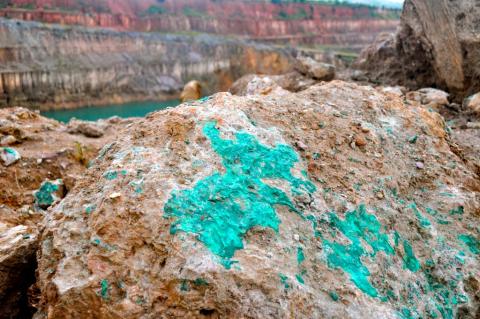
EITI process leading to improvements in information and disclosure
Burkina Faso, which literally means the land of “honest people”, has implemented a flurry a reforms in the last two years to improve the governance of its mining sector. A National Mining Commission was created in January 2014 and a transition government adopted a new mining code in June 2015. The new code encourages companies to create plans that maximise local content and the inclusion of local businesses. It also institutionalises transparency through an annual report from the State on its contribution to the mining sector’s development. The Mining Code calls for all politically exposed persons, at a national and local level, to be barred from holding mining interests. It also requires that mining permits are published.These measures are designed to help reduce the risk of corruption. The 2014 EITI Report published in December 2016, calls for further reforms to improve statistics on the quarrying sector and access to published contracts.
Reforming to combat declining gold prices
Burkina Faso is still the fourth largest gold producer in sub-Saharan Africa, behind South Africa, Ghana and Mali. Gold reserves are estimated at more than 800 tons and gold accounts for the largest source of government revenue.
However, declining gold prices have led to decreased revenue from the mining sector. The 2014 EITI Report shows that mining sector revenues totalled 287 million USD in 2014, a fall of 30% compared to the over 200 billion FCFA in 2013. Although gold production increased slightly in 2014 to over 35 tons, given the declining prices, the value of gold production fell below to USD 1 billion in 2014.
Progress in quarrying statistics
Although gold remains the country’s main mining activity and export, other sectors such as quarrying, continue to play an important role in the economy. Previous EITI reports noted that the General Quarrying Directorate did not have statistics on the production of the sector. Since the quarrying sector was included in EITI reporting in 2013, several reforms have been put in place to address this issue. The Ministry of Mines reorganised itself and, like other ministries, has set up a General Statistics and Census Department which deals with issues linked to data paucity. The 2014 annual statistics publication of the Ministry of Mines now includes production figures on granite, dolomitic limestone, clay and feldspar. According to the latest report, tax revenues from the allocation of quarrying licenses for the year 2013 were approximately 300,000 USD, which is still only 0.05% of total extractive sector revenues.
More reforms still needed
Burkina Faso has further work to do in terms of data collection at a national level. Although artisanal gold production continues to contribute to the national economy, this contribution is difficult to quantify in the absence of national study on the sector. There are still no official statistics on employment in the extractive sector in Burkina Faso and the 2014 EITI report encourages the General Statistics Directorate to become engaged on this issue. Similarly, the Report encouraged the Ministry of Economy and Finance to disclose its environmental rehabilitation fund allocations. The Mining and Geology General Directorate has been tasked with providing information on the date of application and geographical coordinates in future EITI reports.
To find out more, please visit the Burkina Faso country page.
Burkina Faso’s Validation is scheduled to commence on 1 April 2017.
Related content



